What are Neurological Disorders?
Neurological Disorders
Neurological disorders are conditions that affect the functioning of the nervous system. They may affect the central nervous system, which includes the brain and spinal cord, or the peripheral nervous system, which encompasses all the nerves branching off from the spinal cord.1,2
- Types of neurological disorders
- The prevalence and growth of neurological disorders
- The emotional and social challenges of neurological disorders
- The role of IVD in accurate early diagnosis
- Advances and trends in neurology testing
- High-sensitivity antibodies for the detection of biomarkers
- The move towards point-of-care testing
- Artificial intelligence (AI) and machine learning (ML) as diagnostics tools
- Harness Medix Biochemica’s expertise in neurological biomarkers
Illustration of the peripheral and central nervous systems: brain, spinal cord, and nerves. Contributed by C Rowe.
– Thau L, StatPearls Publishing, 2022.2
Neurological disorders cause physical symptoms like pain and coordination difficulties, cognitive symptoms like confusion, and emotional symptoms like mood changes.1
Watch our Webinar! Biomarkers: The Neurodegenerative Disease Game Changer
Types of neurological disorders
Neurological disorders are divided into several categories:
- Neurodegenerative conditions: Disorders that cause the cells in the central nervous system to stop working or die.3 Examples include Alzheimer's disease and Parkinson's disease.1,3
- Neuromuscular conditions: Disorders that affect the nerves controlling voluntary muscles and the nerves that communicate sensory information to the brain, for example muscular dystrophy.1,4
- Brain conditions: Disorders that affect the brain itself, including epilepsy, migraines and stroke as well as traumatic brain injury (TBI).1
| Note that TBI isn’t a disease, it’s an injury caused by trauma to the brain by an outside force, which typically affects cognitive function and, in serious cases, can cause disability.5 |
- Spinal conditions: Disorders that affect the spinal cord, for example spina bifida and spinal muscular atrophy, or a spinal cord injury.1
- Peripheral nerve conditions: Disorders that affect the peripheral nervous system, for example peripheral neuropathy, Bell’s palsy and carpal tunnel syndrome.1
Read more: Advancements in IVD Testing: A New Era for Detecting Traumatic Brain Injuries in Sports
The prevalence and growth of neurological disorders
The estimated worldwide prevalence of common neurological disorders is as follows:
- 416 million people living with Alzheimer’s disease in various stages of progression6
- 55 million people living with dementia7
- 8.5 million people living with Parkinson’s disease8
- 69 million new cases of TBI every year9
These numbers can only be expected to rise in the future - as our global population grows older, neurological conditions will become an even larger challenge for healthcare and social systems.10,11
| Did You Know? |
According to a study by The Lancet Neurology,12 more than three billion people worldwide were living with a neurological disorder in 2021.13
Neurological disorders have become the leading cause of ill health and disability worldwide. The overall number of disability-adjusted life years (DALYs) caused by neurological conditions has increased by 18% since 1990.13 Over 80% of neurological deaths and health loss occur in low- and middle-income countries, where there is less access to treatment.13
In addition to placing a burden on healthcare and social systems,10,11 neurological disorders also carry a significant personal and family burden.13
| “Neurological conditions cause great suffering to the individuals and families they affect, and rob communities and economies of human capital. This study should serve as an urgent call to action to scale up targeted interventions to allow the growing number of people living with neurological conditions to access the quality care, treatment and rehabilitation they need. It is more important than ever to ensure brain health is better understood, valued and protected, from early childhood to later life.” – Dr Tedros Adhanom Ghebreyesus, WHO Director-General, 202413 |
Read more: Prevalence and Growth of Neurological Conditions Worldwide
The emotional and social challenges of neurological disorders14
- People with neurological disorders may experience intense mood swings and problems regulating their emotions.
- Because neurological diseases and disorders impact physical abilities and cognitive functions, they can lead to reduced self-esteem.
- Societal barriers like lack of understanding, lack of social inclusion and lack of proper accommodations for their condition are often experienced.
- The impact on family relationships can be significant. Caring for a loved one with a neurological disorder can cause stress and even lead to burnout as caregivers are faced with new responsibilities and feelings of grief and anxiety.
The profound impact at a global, systemic, community, family and individual level highlight the need for high-quality neurological testing procedures to enable timely, accurate diagnoses.
The role of IVD in accurate early diagnosis
The early detection and diagnosis enables timely treatment, which has significant benefits for patients, including:15
- Fewer complications and disabilities
- Better quality of life
- Lower treatment costs
- Improved survival rates
| Better neurological testing = earlier diagnosis = improved patient outcomes |
Read more: How IVD Enables Earlier and More Accurate Alzheimer’s Disease Diagnosis
In vitro diagnostic (IVD) testing is used in conjunction with physical examination and imaging tests to detect and diagnose neurological diseases. Blood, urine or cerebrospinal fluid (CSF) may be tested.16
For example, when testing for Alzheimer’s disease, healthcare practitioners will test for soluble biomarkers in the CSF. Because CSF is in direct contact with the brain tissue, it can be tested for the presence of certain proteins associated with changes happening in the brain.
Read more: Alzheimer’s Biomarkers
Unfortunately, the method of getting a CSF sample for testing involves a painful, invasive and costly lumbar puncture procedure.17
Advances and trends in neurology testing
CSF alternatives
Because CSF sampling is so invasive and expensive, IVD is focused on moving toward the testing of other biofluids to effectively diagnose neurological diseases.18 Current and potential alternatives to CSF sampling include:
Blood sampling: Blood and plasma/serum are becoming more widely used to diagnose neurological disorders, and to monitor neurological markers and conditions.18
Testing blood can help to identify certain muscle disorders and protein or fat-related disorders that affect the brain. Blood sampling can also aid in monitoring the levels of therapeutic drugs used to treat epilepsy and other neurological disorders.19
Urine sampling: A simple urine analysis can be used to identify acrolein, which is a neurotoxin and a biomarker for TBI. Testing urine within seven days of an injury, even a mild injury with no immediate symptoms, can help to reduce the risk of long-term health issues, including Parkinson's disease. It is also faster and less invasive than a blood analysis.20
Nasal fluid sampling: Olfactory dysfunction is an early sign of most neurological disorders and research suggests that the olfactory pathway could be one of the first areas to be affected in patients. Therefore, nasal fluid is being researched for its potential in early-stage diagnosis of neurodegenerative diseases.18,21
Tear sampling: Due to the close relationship between the eye and the brain, tears could be a source of biomarkers for conditions like Alzheimer’s disease. The identification of biomarkers in tears could lead to the development of cost-effective, non-invasive methods of screening, diagnosis and disease monitoring.18,22
Read more: Debunking Six Common Misconceptions About Biospecimens in IVD Testing
High-sensitivity antibodies for the detection of biomarkers
Experts are continuously developing their understanding of neurological diseases and their related biomarkers. For example, in recent years neurofilament light (NfL), phosphorylated tau protein (p-Tau) and glial fibrillary acidic protein (GFAP) have all been identified as promising biomarkers for a variety of neurological conditions.23
Medix Biochemica offers high-sensitivity monoclonal antibodies for the detection of NfL protein in both blood and CSF.24,25
Read more: Neurofilament Light (NfL)
The move towards point-of-care testing
Point-of-care (PoC) testing is clinical testing that’s done at or close to the site of patient care, rather than at a centralized laboratory. PoC testing provides rapid turnaround of results so that treatment can be started early, enabling better clinical and economic outcomes for each patient. The development of smaller and more accurate testing devices has made PoC testing easier than ever before - it can be done by a variety of healthcare professionals, while some PoC tests can even be done by the patients themselves. PoC testing therefore provides an easily accessible identification and monitoring solution for a wide range of ailments, including neurological conditions.26
Read more: Point-of-Care Testing
Artificial intelligence (AI) and machine learning (ML) as diagnostics tools
AI and ML are showing great potential in the field of neurology. Here are a few ways that these advanced technologies can help:27
- AI can analyze MRI and CT scans and detect small abnormalities or early signs of neurological disorders, enabling early diagnosis and treatment.
- ML models can predict the risk of developing neurological disorders based on genetic, clinical and lifestyle data, helping patients and their healthcare providers to be proactive and take preventative steps.
- AI can analyze patient data, like genetics and therapy response, to tailor highly effective personal treatment plans.
- AI systems can process huge amounts of patient data, making it easier for healthcare providers to access and to organize the information they need for decision-making.
- AI-enabled telemedicine and wearable devices make it easier to monitor patients remotely, which improves access to care and reduces the burden on healthcare facilities.
Harness Medix Biochemica’s expertise in neurological biomarkers
Medix Biochemica offers an exceptionally comprehensive portfolio of IVD raw materials, with over 5 000 products available. Our materials include high-quality antibodies, antigens, enzymes, biospecimens, molecular reagents and more. We excel at providing antibodies with high sensitivity and specificity, low batch-to-batch variation, and can offer pairing recommendations to help our customers choose the best combination of antibodies for sandwich assays.17
Free samples! We are offering free samples of our selected neurology antibodies for a limited time.
| Did You Know? We are supporting our customers in test development by providing high-quality monoclonal antibodies (mAbs) to the best characterized biomarkers for Alzheimer’s disease, tau (phosphorylated and total), NfL, UCH-L1, alpha-synuclein and GFAP and more. These antibodies are essential tools for researchers and clinicians developing new diagnostic tests and therapeutic interventions.17 |
Medix Biochemica has global reach, with headquarters in Finland (Espoo) and offices in France, Germany, the USA and China. We are trusted by leading names in the IVD industry, working with 23 out of 25 of the largest global IVD companies.
Contact us discuss your requirements:
References:
- Neurological disorders. Cleveland Clinic. Accessed October 31, 2024. https://my.clevelandclinic.org/health/diseases/neurological-disorders.
- Thau L, Reddy V, Singh P. Anatomy, central nervous system. StatPearls Publishing; 2024. Accessed November 1, 2024. http://www.ncbi.nlm.nih.gov/books/NBK542179/.
- Neurodegenerative disorder. National Cancer Institute. Accessed November 1, 2024. https://www.cancer.gov/publications/dictionaries/cancer-terms/def/neurodegenerative-disorder.
- Neuromuscular disorders. Cedars-Sinai. Accessed November 1, 2024. https://www.cedars-sinai.org/health-library/diseases-and-conditions/n/neuromuscular-disorders.html.
- Traumatic brain injury (TBI). National Institute of Neurological Disorders and Stroke. Accessed November 1, 2024. https://www.ninds.nih.gov/health-information/disorders/traumatic-brain-injury-tbi.
- Gustavsson A, Norton N, Fast T, et al. Global estimates on the number of persons across the Alzheimer’s disease continuum. Alzheimers Dement. 2023;19(2):658-670. doi:10.1002/alz.12694.
- Shin JH. Dementia epidemiology fact sheet 2022. Ann Rehabil Med. 2022;46(2):53-59. doi:10.5535/arm.22027.
- Parkinson disease. World Health Organization. Accessed November 1, 2024. https://www.who.int/news-room/fact-sheets/detail/parkinson-disease.
- Dewan MC, Rattani A, Gupta S, et al. Estimating the global incidence of traumatic brain injury. J Neurosurg. 2018;130(4):1080-1097. doi:10.3171/2017.10.JNS17352.
- Béjot Y, Yaffe K. Ageing population: a neurological challenge. NED. 2019;52(1-2):76-77. doi:10.1159/000495813.
- Ageing and health. World Health Organization. Accessed November 1, 2024. https://www.who.int/news-room/fact-sheets/detail/ageing-and-health.
- Steinmetz JD, Seeher KM, Scheiss N, et al. Global, regional, and national burden of disorders affecting the nervous system, 1990–2021: A systematic analysis for the Global Burden of Disease Study 2021. Lancet Neurol. 2024;23(4):344-381. doi:10.1016/S1474-4422(24)00038-3.
- Over 1 in 3 people affected by neurological conditions, the leading cause of illness and disability worldwide. Accessed November 1, 2024. https://www.who.int/news/item/14-03-2024-over-1-in-3-people-affected-by-neurological-conditions--the-leading-cause-of-illness-and-disability-worldwide.
- Emotional and social impact of neurological disorders. Unique Community Services. Accessed November 1, 2024. https://uniquecs.co.uk/blog/emotional-and-social-impact-of-neurological-disorders/.
- Luca MD, Nutt D, Oertel W, et al. Towards earlier diagnosis and treatment of disorders of the brain. Bull World Health Organ. 2018;96(5):298. doi:10.2471/BLT.17.206599.
- National Academies of Sciences, Engineering, and Medicine; Health and Medicine Division; Board on Health Care Services; Committee on Identifying New or Improved Diagnostic or Evaluative Techniques. Techniques for neurological disorders. In: Advances in the Diagnosis and evaluation of disabling physical health conditions. National Academies Press (US); 2023. Accessed November 1, 2024. https://www.ncbi.nlm.nih.gov/books/NBK593674/.
- Expert opinion. Email from Emilia Galli, R&D Manager, Medix Biochemica. February 29, 2024.
- Expert opinion. Anthony Austin. Global Marketing Manager, Medix Biochemica. October 2024.
- Neurological Diagnostic Tests and Procedures. US Department of Health and Human Services National Institutes of Health. Accessed November 1, 2024. https://catalog.ninds.nih.gov/sites/default/files/publications/neurological-diagnostic-tests-procedures.pdf.
- Simple urine analysis can be used to quickly identify brain trauma and expedite treatment. News-Medical. Accessed November 1, 2024. https://www.news-medical.net/news/20190905/Simple-urine-analysis-can-be-used-to-quickly-identify-brain-trauma-and-expedite-treatment.aspx.
- Duan S, Yang J, Cui Z, et al. Seed amplification assay of nasal swab extracts for accurate and non-invasive molecular diagnosis of neurodegenerative diseases. Transl Neurodegener. 2023;12(1):13. doi:10.1186/s40035-023-00345-1.
- Kaštelan S, Braš M, Pjevač N, et al. Tear biomarkers and Alzheimer’s disease. Int J Mol Sci. 2023;24(17):13429. doi:10.3390/ijms241713429.
- Baiardi S, Quadalti C, Mammana A, et al. Diagnostic value of plasma p-tau181, NfL, and GFAP in a clinical setting cohort of prevalent neurodegenerative dementias. Alzheimers Res Ther. 2022;14:153. doi:10.1186/s13195-022-01093-6.
- Medix Biochemica. Neurofilament Light (NfL). 2023.
- Medix Biochemica. Novel high affinity monoclonal antibodies for specific detection of neurofilament light protein in serum and cerebrospinal fluid. 2023.
- Larkins MC, Thombare A. Point-of-care testing. In: StatPearls. StatPearls Publishing; 2024. Accessed November 4, 2024. http://www.ncbi.nlm.nih.gov/books/NBK592387/.
- Kalani M, Anjankar A. Revolutionizing neurology: the role of artificial intelligence in advancing diagnosis and treatment. Cureus. 2024;16(6):e61706. doi:10.7759/cureus.61706.
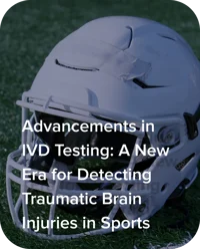
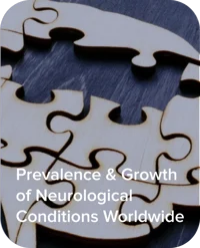
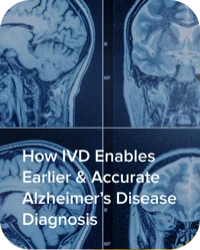
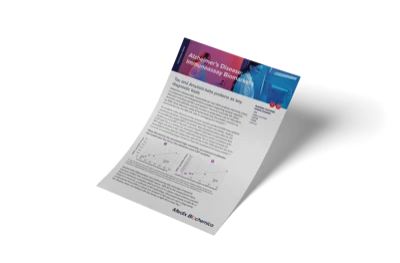


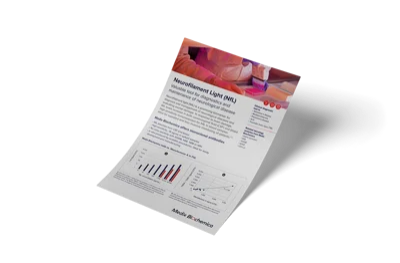
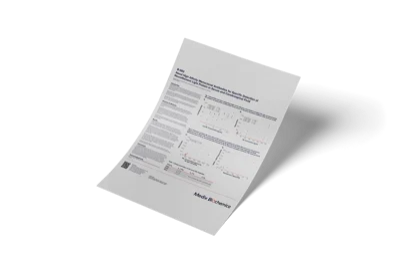


.png?width=670&name=Article%201%20Advancements%20in%20IVD%20Testing%20A%20New%20Era%20for%20Detecting%20Traumatic%20Brain%20Injuries%20in%20Sports%202%20(1).png)
